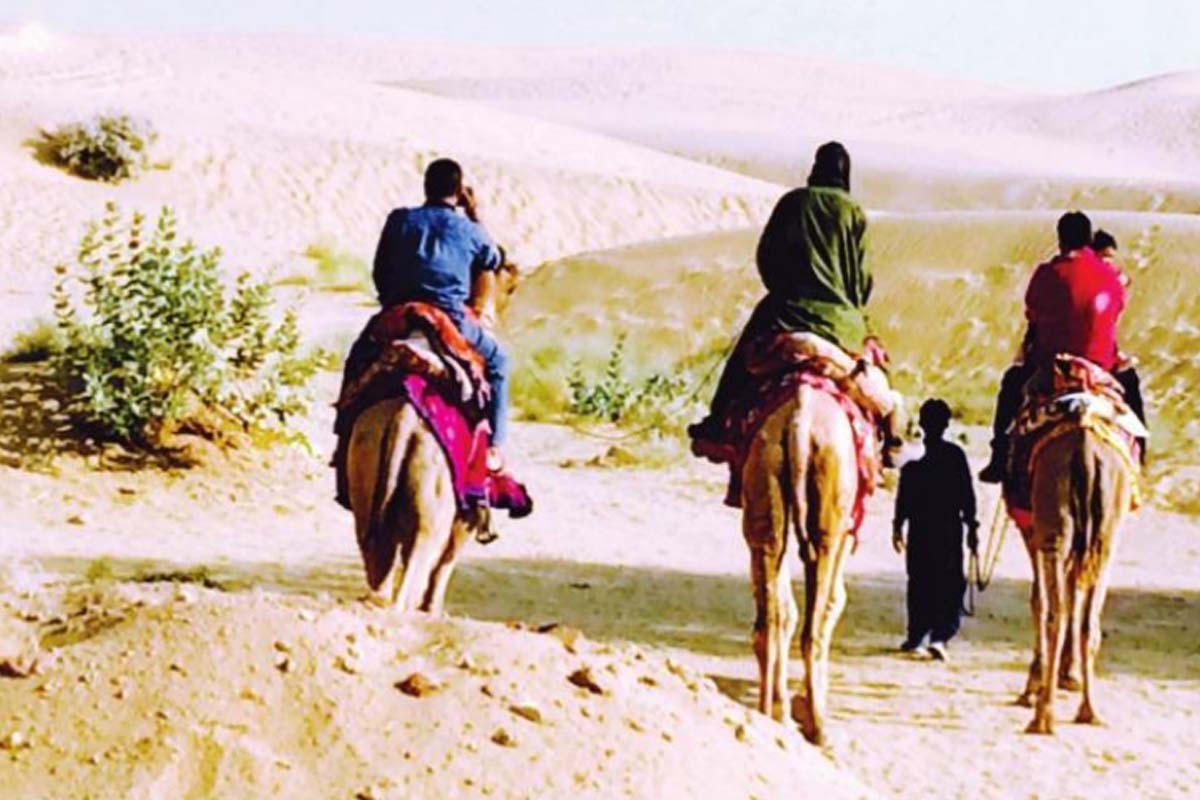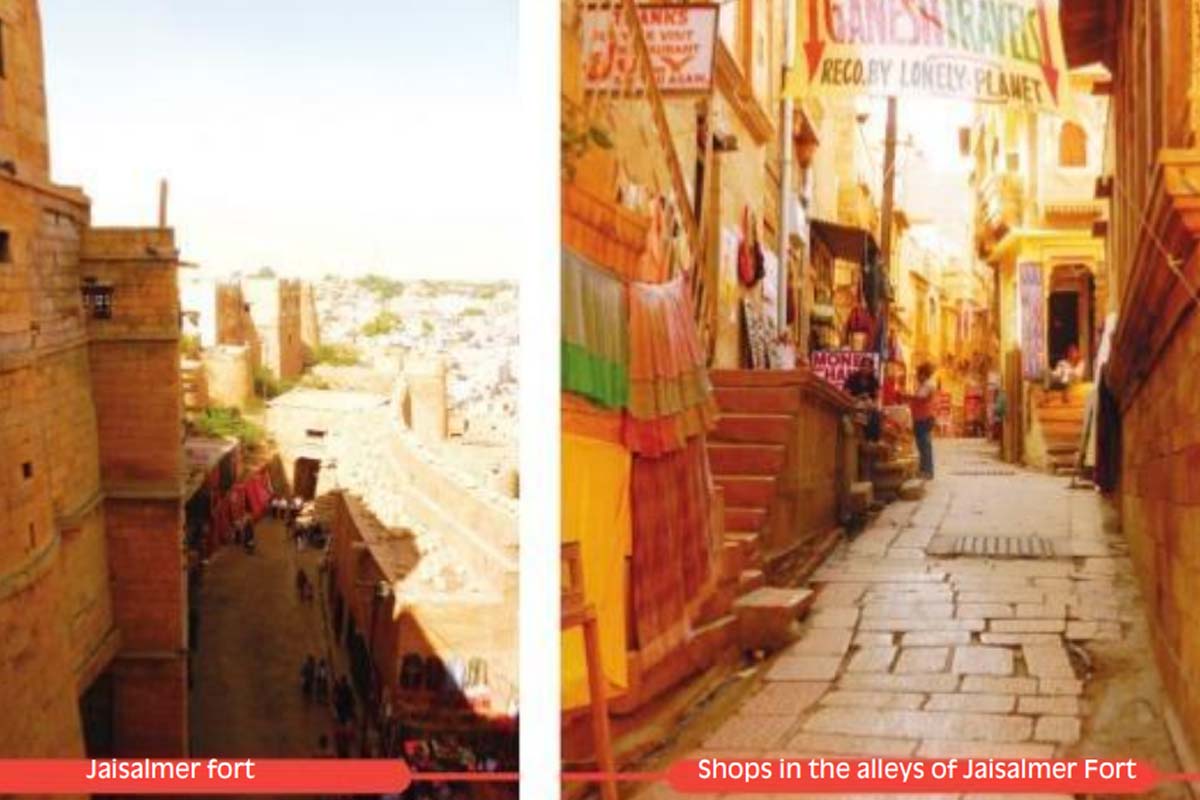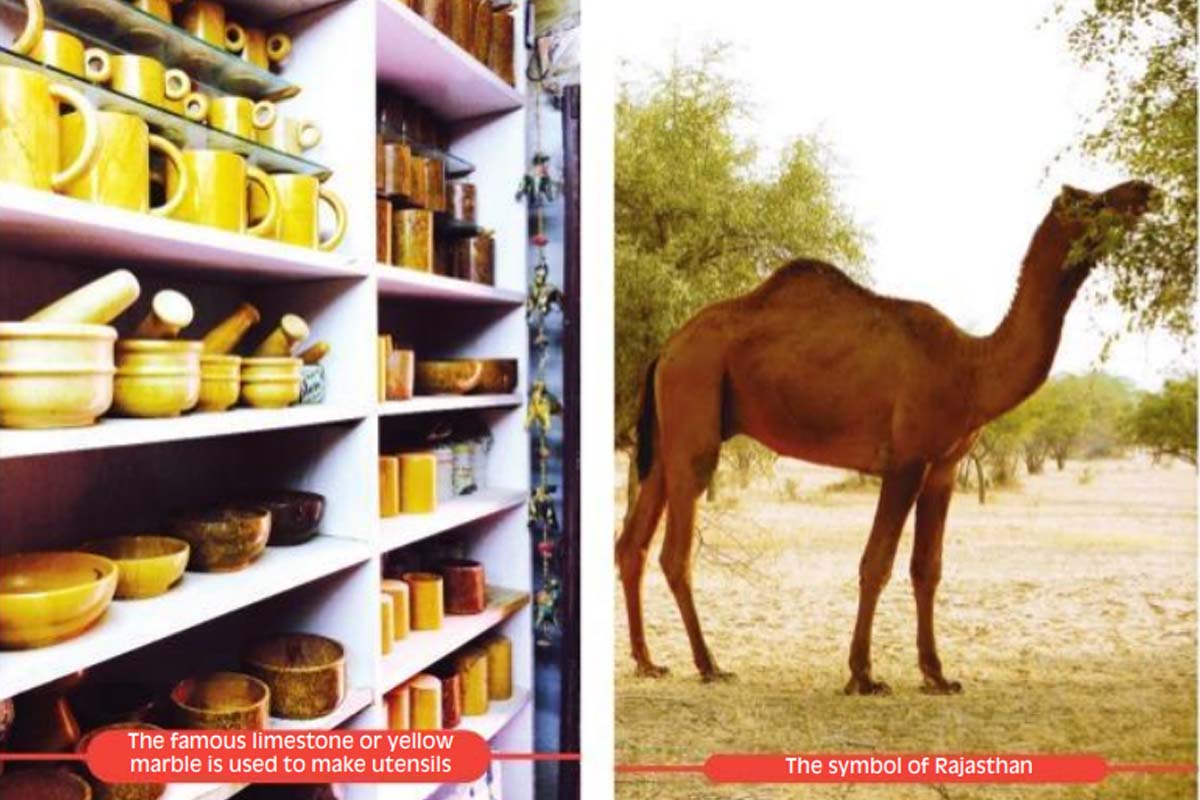Kalyani University unveils fourth volume of Aparajit Satyajit series on Ray
Vice-chancellor of Kalyani University Dr Amlendu Bhuiyan lighted the ceremonial lamp.
Rich in majestic forts, mesmerising sand dunes and beautiful architecture, Jaisalmer is a sight for sore eyes.

Photo: SNS
‘Only the desert has a fascination —to ride alone — in the sun in the forever unpossessed country, away from man. That is a great temptation.” — DH Lawrence Winter is the ideal time to set off for Rajasthan to witness the glory of the princely state. Its palaces and forts are reminders of the many kingdoms that historically vied for the region. Rajasthan used to be the abode of Rajas before Independence and is now synonymous with the panoramic view of sand dunes, mesmerising palaces and forts, colourful culture and royal hospitality.
Jaisalmer, being 900 kms from Delhi, was an ideal place for a break from the monotony and hectic schedule of city life. As an art curator, I was intrigued by the beautiful blend of history and beauty in the desert city. The place is historically rich in havelis, the Jaisalmer Fort and majestic sand dunes.

Counted among one of the six hill forts of Rajasthan, Jaisalmer Fort is clustered together as a designated Unesco world heritage site. It is believed to be one of the “living forts” of the world as nearly one-fourth of the old city’s population resides within it. It was built in 1156 by Rajput ruler Rawal Jaisal, after whom the city is named. As a child, I was fascinated by Jaisalmer, courtesy legendary director Satyajit Ray’s classic film, Sonar Kella. Later in my professional life, I was filled with a desire to explore the fort and its eternal art and architecture.
Advertisement
The fort’s massive yellow sandstone walls are a tawny lion colour during the day, fading to honey-gold as the sun sets, thereby camouflaging the fort in the yellow desert. For this reason it is known as “Sonar Quila” or Golden Fort. Standing amid the sandy expanse of the great Thar Desert on Trikuta hill, Jaisalmer Fort attracts tourists from the length and breadth of the globe. The advent of British Rule, emergence of maritime trade and growth of the port of Bombay, led to the gradual economic decline of Jaisalmer. Nonetheless, the strategic importance of the city was demonstrated during the 1965 and 1971 wars with Pakistan.

The fort road has numerous eateries including Italian, French and native cuisines. The serpentine lanes and bylanes will lead one on a veritable treasure hunt. The colourful bylanes of the country’s only “living fort” are abundant with shops selling handicraft items.
The lanes are always buzzing with life and passion. Jewellery, leather bags, colourful dupattas and other handicraft items can be bought at reasonable rates. The fort road is a walking adventure with cows, motorbikes and scooters not giving way to pedestrians!
I am always intrigued by the flora and fauna of a place. The curiosity to see wildlife took me to the Desert National Park situated near the towns of Jaisalmer and Barmer. Covering an area of 3,162 square kilometres, it is one of the largest national parks. It’s an example of the ecosystem of the Thar Desert as sand dunes form 20 per cent of the park. The major landform consists of craggy rocks and compact salt lake bottoms, inter-medial and fixed dunes.
Despite being a fragile ecosystem, there is an abundance of birdlife. The region is a haven for migratory and residents of the desert. Many eagles, harriers, falcons, bustards, kestrel and vultures are spotted there. Eagle species are present in plenty. Sand grouse are spotted near small waterbodies as is the magnificent Great Indian Bustard. The most suitable time to visit is between November and January. The Desert National Park has a collection of fossils of animals and plants of 180 million years old. Some fossils of dinosaurs from six million years ago have been found in the area.
I think the sand dunes of Jaisalmer are one of the main attractions of Rajasthan. The Thar Desert, also known as the Great Indian Desert, is a large arid region that covers an area of 200,000 sq km and forms a natural boundary between India and Pakistan. The sand dunes are located at the outskirts of Jaisalmer. Travel enthusiasts can join a camel caravan from Jaisalmer and ride along as it takes one to the heart of the desert. Taking a camel safari will give one an opportunity to witness rustic life. The solitude and the setting golden sun are worth capturing with a camera. At night, kalbeliadance is performed by the Kalbelia tribe. The Kalbelias moved from one place to another in the ancient times. Their traditional occupation is catching snakes and trading snake venom. Hence, the dance movements and the costumes of the community bear a resemblance to that of serpents.
Rajasthan is quite well known for its royal hospitality. Vibrant turbans, infectious smiles and traditional costumes are some striking characteristics of the people. The place is also famous for its ornaments. Since time immemorial Rajasthani people have been wearing jewellery of various metals and materials. The royal families used to be great patrons of art and architecture and hence, one can come across a lot of intrinsic detailing in the crafts.
Rajasthan varies from arid desert districts to greener areas. The varying degree of geography has resulted in a rich cuisine involving both vegetarian and non-vegetarian dishes. Dal bati churmais a popular dish. The manganiars of Jaisalmer are the most sophisticated musicians of the place. A manganiar playing his musical instrument, called kamaicha, is a common sight in the golden city
Camels are an indispensible part of lives in the area. Many people still eke out an existence from camel breeding, using camel milk, wool, skin and bones for various purposes. Camel bones are a more sustainable alternative to ivory, used for local artisanal work. Their wool is used for making rugs, blankets, and cots. After their death, their skin is used for leather, which is popular for local handicraft use. In Rajasthani folklore it symbolises love, and ownership of a camel once signaled status and opulence
The golden city of Jaisalmer offers a wonderful escape from the maddening crowd of the capital. It provides one an opportunity to spend some memorable moments in the vintage and eternal city.
Advertisement